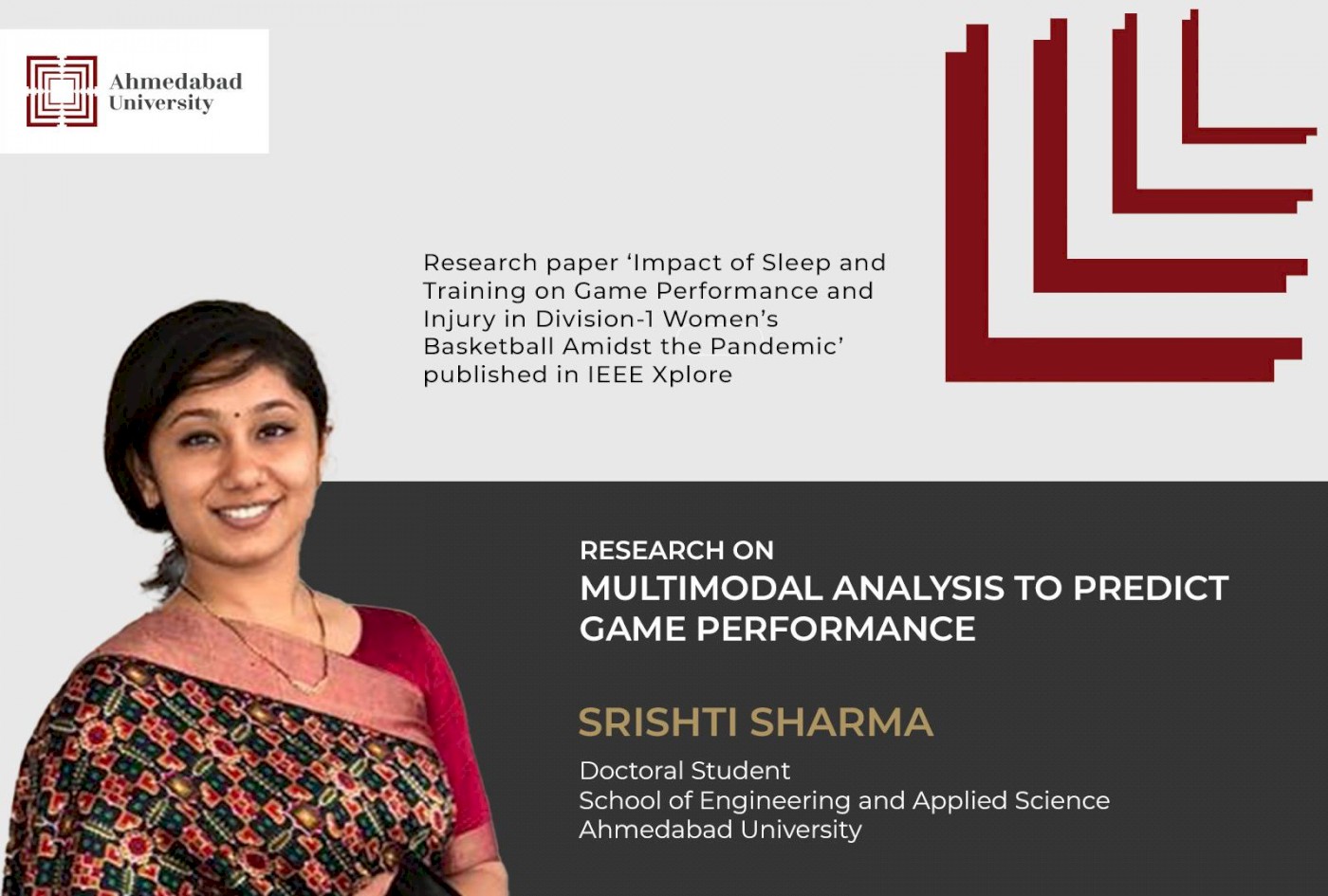24 March 2022
New Research on Multimodal Analysis to Predict Game Performance

What if coaches had access to intelligent data on sleep and training workload of athletes? Could it help them in team selection and game performance, and help avoid injuries to the players? Srishti Sharma, a doctoral student at the School of Engineering and Applied Science, Ahmedabad University, has researched multimodal analysis to predict game performance. Along with a research team at Sacred Heart University, Connecticut, USA, Srishti investigated the impact of sleep and training load of a collegiate women’s basketball team during the pandemic on their game performance and injury prediction using machine learning algorithms. Unlike other studies that try to predict an athlete’s game performance and risk of injury based on their past match statistics and past injury record, respectively, Srishti and her team have predicted athletes’ game performance and injury risk based on their physical, physiological and cognitive state information.
Titled Impact of Sleep and Training on Game Performance and Injury in Division-1 Women’s Basketball Amidst the Pandemic, the paper has recently been published in IEEE Xplore. Srishti, and Samah Senbel from Sacred Heart University, tried to quantify inputs (training, stressors, and perceptions) and outputs (game performance and injury) in a collegiate basketball setting through a multi-disciplinary approach. They collected data during the pandemic-hit season, when unpredictable long breaks had interrupted practice and playing seasons.
Sleep monitoring devices, training data from coaches, injury reports from medical staff, and weekly surveys from the athletes themselves were used as inputs for 22 weeks in the game season from October 2020 to March 2021. For their second round of research, they have collected data from October 2021 to March 2022, this time monitoring sleep, training and emotional state. “For the second set, we have also looked at heart rate, distance covered by the athlete on the court, and acceleration and deceleration using a polar waist wearable during the match, and fatigue analysis prior to the match,” says Srishti. The researchers are in the process of gathering data provided by a coach who has a sports arena monitored by closed-circuit TV cameras. “We are getting videos now, so instead of having a coach monitor athlete activity closely all the time, we are training our algorithm to do so through computer vision,” explains Srishti. The plan is to create an interactive dashboard where the coach can click a particular aspect, sleep aspect or training aspect, for instance, and use the data for team selection for a specific game.
The researchers believe their data collection methodology with a validated machine learning framework will help improve the performance of athletes while reducing the risk of injuries.



